
Sphene (Titanite) Aboɔden abo: Nkyerɛaseɛ, Botaeɛ & Nsɛm
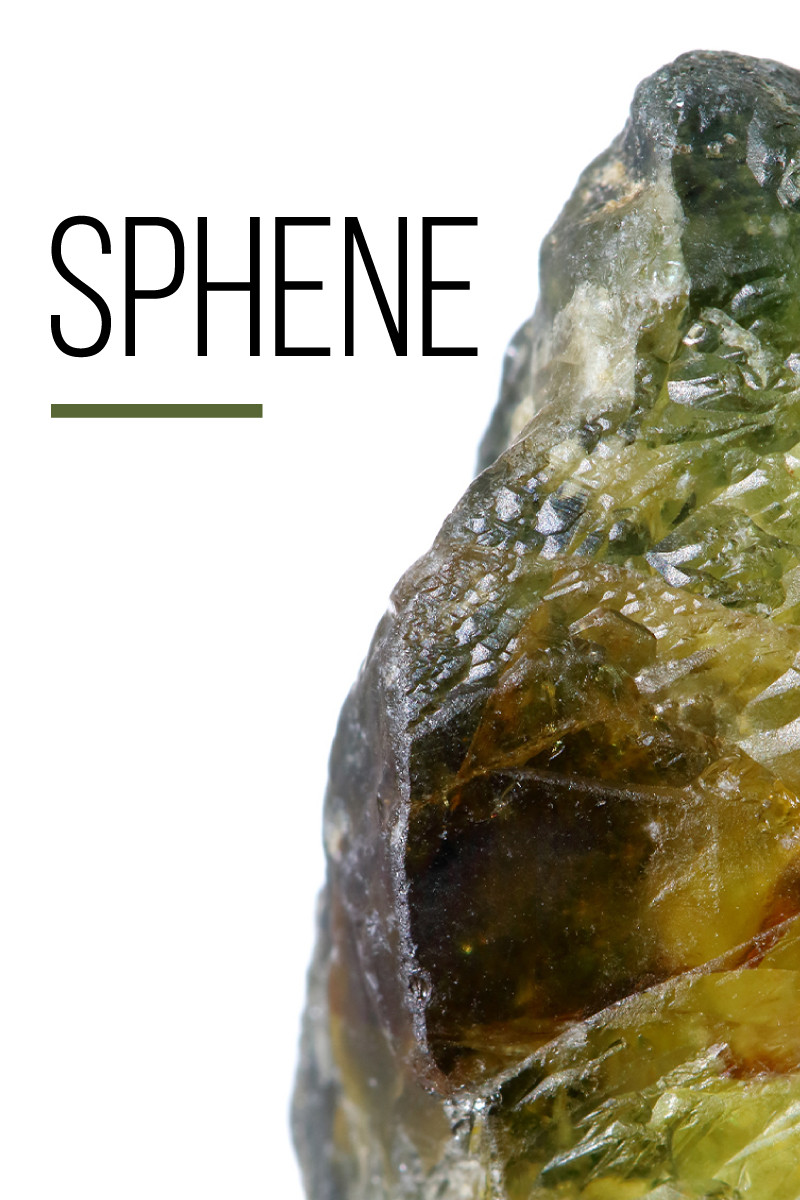 Sphene, anaa titanite, yɛ aboɔden abo a wɔntaa nhu a wɔn a wɔboaboa nneɛma ano ani gye ho efisɛ ne hyerɛn wɔ diamond de ase pɛɛ na ne kɔla hyerɛn boro diamond de so. Ɛno akyi no, so sphene yɛ ɔbo a ɛsom bo? Dabi, sphene yɛ aboɔden abo a ɛsom bo fã bi .
Sphene, anaa titanite, yɛ aboɔden abo a wɔntaa nhu a wɔn a wɔboaboa nneɛma ano ani gye ho efisɛ ne hyerɛn wɔ diamond de ase pɛɛ na ne kɔla hyerɛn boro diamond de so. Ɛno akyi no, so sphene yɛ ɔbo a ɛsom bo? Dabi, sphene yɛ aboɔden abo a ɛsom bo fã bi .
Kɔla bɛn na ɛyɛ sphene? Ɛtaa yɛ kɔkɔɔ-ahabammono a ɛhyerɛn nanso ebetumi afi nea enni kɔla so akosi tuntum so. Nanso, dane ɔbo no wɔ hann ase na wubehu kɔla ahorow — a nyankontɔn hyerɛn a ɛhyerɛn ma ɛne no hyia!
Woresusuw ho dedaw sɛ wobɛhwɛ sphene agude? Bra na hu sphene aboɔden abo ntease, ayaresa tumi, nneɛma bo, ne nea ɛkeka ho!

Dɛn Ne Sphene Abo?
Sphene yɛ mineral titanite a ɛyɛ titanium pii na ɛno nkutoo ne nea wɔde yɛ aboɔden abo. Ɛte saa, titanite nyɛ asɛmfua a ɛne ne ho di nsɛ kɛkɛ, ɛyɛ mineral abusua nso.
Sɛ aboɔden abo da nkyɛn a, dɛn na wɔde sphene di dwuma? Wobetumi atu titanite sɛ titanium dioxide a wɔde yɛ nneɛma a wɔde yɛ kɔla.
Nyansahufo nso de titanites di dwuma sɛ geochronometers (nnwinnade a wɔde susuw asase ho abakɔsɛm denam radioactive decay so) ne thermobarometers (aboɔden abo a wɔde susuw nhyɛso ne ɔhyew bere a abotan reyɛ).
Twɛn, so sphene yɛ radioactive? Dwo mu yiw. Asinasin a wɔayɛ no fɛfɛɛfɛ anaasɛ wɔayɛ no fɛfɛɛfɛ no yɛ nea asiane biara nni ho, bere a nea ɛyɛ mmerɛw no yɛ nea asiane biara nni ho bere tiaa bi.
Sphene aboɔden abo yɛ nneɛma a ne bo nyɛ den a wɔde besi peridot ananmu . Enti, wubetumi de sphene adi dwuma sɛ August awobo anaa ayeforohyia afe a ɛto so 16 aboɔden abo wɔ peridot ananmu. Sphene ankasa yɛ nsoromma mu hwɛ bo ma Libra, Sagittarius, ne Taurus.

Sphene Nkyerɛkyerɛmu & Su ahorow
Sphene yɛ calcium titanium silicate a wɔde yɛ aduru. Ɛkame ayɛ sɛ dade ne aluminium wɔ sphene mu bere nyinaa, ne nneɛma a ɛho yɛ na (REE) te sɛ cerium, thorium, ne yttrium.
REE ahorow betumi ama aboɔden abo no anya “radioactive” ahabammono a ɛhyerɛn. Nanso, mpɛn pii no, dade a ɛwɔ mu no dɔɔso dodo sɛ sphene betumi ayɛ hann.
Sphene mineral ahorow bi bɛyɛ metamict fi cerium mu. Metamictization hwehwɛ sɛ nneɛma a ɛma anyinam ahoɔden porɔw ahwehwɛ nhyehyɛe no, na ɛma ɔbo no yɛ nea enni nsɛ.
Sphene no mineral su nyinaa wɔ aseɛ ha:
Mohs denden : 5-5.5
Kɔla : Mpɛn pii no, ɛyɛ chartreuse, kɔkɔɔ, ahabammono, anaa bruu; Ebetumi ayɛ nea enni kɔla, bruu, kɔkɔɔ, fitaa, anaa tuntum; Kɔla-zoning abu so
Ahwehwɛ nhyehyɛe : Monoclinic
Luster : Ɛyɛ resin kosi sub-adamantine
Transparency : Ɛyɛ nea ɛda adi pefee kosi nea ɛda adi pefee; Ɛtɔ mmere bi a, ɛnyɛ nea ɛda adi pefee
Nneɛma a ɛma nneɛma yɛ mmerɛw : 1.84-2.11
Nnipa dodow : 3.45-3.60
Cleavage : Ɛyɛ papa kosi papa wɔ [110] so.
Akisikuru : Conchoidal
Streak : Ɛyɛ kɔkɔɔ-fitaa, pink, anaa fitaa
Pleochroism : Ɛyɛ nea ɛkɔ fam kosi nea ɛyɛ den wɔ abo a ɛyɛ mmerɛw mu; Ɛsono kɔla ahorow a ɛwɔ trichoic no gyina gem kɔla so, nanso mpɛn pii no ɛyɛ kɔkɔɔ a ɛyɛ hare, ɛyɛ borɔdɔma-biribiri, ne bruu-kɔla; Ahwehwɛ bruu bi wɔ dichroism a enni kɔla kosi bruu
Optical effects : Ɛntaa mma sɛ ɛsakra kɔla
Sphene su ahorow bi (ne ahorow) gu ahorow kakra gyina beae a ɛwɔ so.
 Mfonini: Chrome sphene ahorow ahorow
Mfonini: Chrome sphene ahorow ahorow
Sphene Ahorow ahorow
Sphene ahorow a aban de ma biara nni hɔ, nanso yɛbɛtwe adwene asi ahorow abien a ɛnyɛ aban de a ebia wubehu bere a woretɔ nneɛma so:
Chrome Sphene : Emerald-green ahorow a ɛsom bo a wɔde chromium kɔla ayɛ, a ne fã kɛse no ara fi Baja, California, U.S.A
Capelinha Sphene : Ɛho yɛ na yiye, ɛyɛ papa, na ɛyɛ lime-ahabammono a efi Capelinha, Brazil
Sɛ yɛkɔ metaphysical so a, dɛn ne sphene kyerɛ?
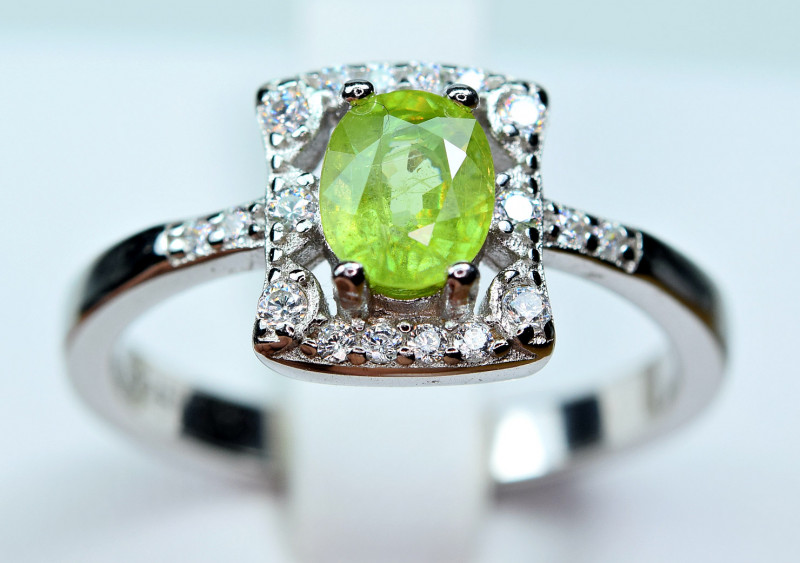
Sphene Nkyerɛase & Abakɔsɛm
Sphene yɛ nimdeɛ, nneɛma foforo, ne ɔsoro hann ho sɛnkyerɛnne. Ɛdefa honhom mu sphene aboɔden abo ntease ho no, ɛyɛ talisman ma akɔmfo, nsoromma mu ahwɛfo, ne tarot akenkanfo.
Edin “titanite” no kyerɛ titanium a ɛwɔ mu. Wonyaa “Sphene” fi Hela kasa mu sphenos , a ɛkyerɛ “akwan,” a wɔde ne ahwehwɛ a ɛte sɛ wedge no din.
Enti, dɛn nti na wɔfrɛ sphene titanite? Mmuae tiawa: Mpɛn pii no, aboɔden abo ho animdefo pɛ “titanite,” bere a aboɔden abo ho animdefo pɛ “sphene.”
Mmuae a ɛware kakra no bata ɔbo no abakɔsɛm ho.
Marc-Auguste Pictet, Switzerlandni nyansahu mu kyerɛwfo ne nhwehwɛmufo bi dii kan huu titanite wɔ Germany Bavaria Kwae no ho wɔ 1787. Nanso, ɛyɛ 1795 mu ansa na Germanni nnuruyɛfo Martin Klaproth nyaa ne nkyerɛkyerɛmu ne din a edi kan wɔ aban kwan so.
Wɔ 1801 mu no, Franseni aboɔden abo ho ɔbenfo Rene Hauy a wagye din no bɔɔ edin “sphene.” Wɔde nsɛmfua abien no nyinaa dii dwuma kɛse, ɛwom sɛ na “sphene'' agye din kɛse de.
Nanso, Amanaman Ntam Aboɔden abo Fekuw (IMA) kae sɛ “titanite” nkutoo na ɛteɛ, na ɛmaa edin “sphene” no gui wɔ 1982. Eyi nyinaa akyi no, nsɛmma nhoma ahorow a atipɛnfo ahwɛ mu mpo ma akyerɛwfo kwan ma wɔde edin “sphene” di dwuma ma aboɔden abo no.
Nkakrankakra, “titanite” bɛyɛɛ nea abu so kɛse wɔ aboɔden abo ho nimdeɛ mu bere a “sphene” bɛyɛɛ nea abu so kɛse wɔ aboɔden abo ho adesua mu no.
Edin biara a wode bedi dwuma no, ɔbo no da so ara wɔ ayaresa tumi koro no ara, na yɛbɛka ho asɛm akyi!

Sphene Ayaresa Nneɛma
Aboɔden abo wɔ tumi pɔtee bi sɛ abo a ɛsa yare a egyina wɔn kɔla, ahoɔden, ne abakɔsɛm so. Wɔde aboɔden abo a ɛyɛ ahabammono te sɛ sphene di dwuma ma koma chakra ayaresa , ɛda nkonimdi adi, na ɛne abɔde di nkitaho.
Wɔ adwene mu no, wɔtaa kamfo sphene abo kyerɛ sukuufo anaa nhwehwɛmufo, na wɔka sɛ ɛboa ma wɔde wɔn adwene si biribi so kɛse, wɔkae ade, na wɔyɛ nsɛm ho adwuma.
Sphene crystal ayaresa afoforo bɛn na ɛwɔ hɔ?
Nipadua mu Ayaresa
Mfaso ahorow bi a wɔkyerɛ sɛ sphene de ba no bi ne sɛ ɛboa ma nnompe a abubu sa, esiesie nnompe a ɛkyere so, na ɛma nipadua no tumi ko tia nyarewa.
Nkate mu Ayaresa
Wosusuw sɛ sphene boa wo ma wudi wo nkate horow ho dwuma, hyehyɛ w’adwene, na ɛkari pɛ wɔ nkate mu nneɛma a ɛtra so biara mu.
Any folks aperepere ne sigyadi asetra? Sɛ wuhu sɛ w’ani nnye ho a, sphene betumi aboa ma saa nkate fam ɔkɔm a ɛwɔ abusuabɔ bi ho no so atew. Mmom no, ɛboa wo ma wugye wo ho tom sɛnea wote na ɛhyɛ wo ho dɔ ho nkuran.
Sphene honhom fam bo a ɛsom? Akyinnye biara nni ho sɛ ɛkorɔn! Nanso bo a sphene som sɛ aboɔden abo nso ɛ?

Sphene Aboɔden Aboɔ Nneɛma a Ɛwɔ Hɔ
Te sɛ aboɔden abo dodow no ara no, sphene bo no ba fam kodu “4 Cs.” Nea ɛwɔ nkɛntɛnso kɛse ne sɛnea emu da hɔ, ne kɔla, ne ne mu duru a ɛyɛ carat, na ɛno akyi no, wɔatwa. Nanso, saa nneɛma yi betumi ne wɔn ho wɔn ho nso adi nkitaho — sɛ nhwɛso no, nipadua kɔla a ɛyɛ fɛ betumi akata hyerɛn no so, sɛ wɔatwa no yiye mpo a.
Sɛ wopɛ sɛ wusua pii a, momma yenni kan nhwɛ kɔla so!
Ahosuo
Kɔla a ɛyɛ ahabammono, kɔkɔɔ, ne bruu ne sphene kɔla a wɔtaa de di dwuma, na kɔkɔɔ-ahabammono na agye din sen biara. Saa nhwɛsode ahorow yi mu dodow no ara da kɔla-zoned gradients adi.
Hues a agye din no nyinaa fi asase mu nneɛma a wɔntaa nhu ne dade dodow a ɛwɔ hɔ — dade a ɛba fam ma ɛyɛ kɔkɔɔ ne ahabammono, bere a dade a ɛkorɔn ma ɛyɛ bruu ne tuntum. Nanso, chrome sphenes a ɛyɛ ahabammono a emu yɛ den sen biara no nya ne kɔla fi chromium mu.
Ɛntaa mma sɛ wubehu sphene aboɔden abo a ɛsakra kɔla a efi Afghanistan anaa Pakistan reba. Ebinom dan fi kɔkɔɔ-ahabammono anaa ahabammono so awia hann kɔ bruu-akutu wɔ hann a ɛyɛ hyew ase efisɛ vanadium wɔ mu. Afoforo nso sesa fi kɔkɔɔ-ahabammono anaa bruu-ahabammono kɔ borɔdɔma-kɔla.
Kɔla bɛn na sphene som bo sen biara? Chrome sphene ho yɛ na na ɛsom bo sen biara. Mpɛn pii no, kɔla a ɛyɛ hare (a ɛne ahabammono, kɔkɔɔ, ne borɔdɔma a ɛyɛ hann) bɛsoa mfaso kɛse asen kɔla a ɛyɛ fɛ mpo efisɛ kɔla a ɛyɛ mmerɛw da ɔbo no apete adi yiye.
Dispersion, anaa ogya, yɛ bere a hann fi ɔbo bi mu ba denam mpaapaemu a ɛyɛ kɔla ahorow a ɛyɛ nyankontɔn so. Ɔkwan foforo so no: nyankontɔn a ɛhyerɛn! Sɛ ɛyɛ 0.051 a, sphene no apete no sen diamond de no (0.044).
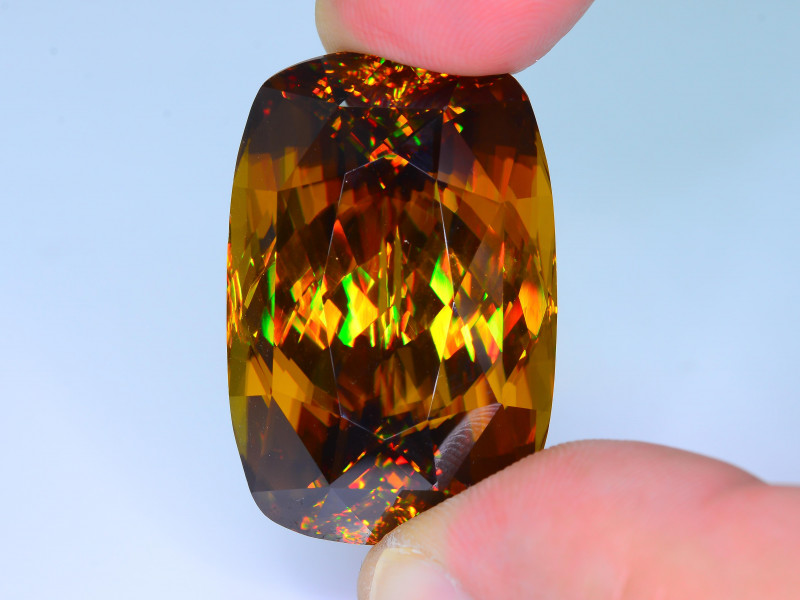
Twa
Sphene a ɛyɛ den no yɛ mfinimfini pɛ, enti sɛ wotwa a, ebetumi ayɛ anifere. Bere a ɔbo no a wɔbɛpopa no betumi ama ayɛ hyew te sɛ daimond no, saa adeyɛ yi yɛ den sen sɛ wobetwitwa mpo. Nanso wɔn a wɔn ho akokwaw sɛ wɔbɛyɛ no betumi ayɛ aboɔden abo a ɛyɛ fɛ na ɛhyerɛn.
Te sɛ kɔla no, sphene a wɔatwa no nya sɛnea ne pete no da adi yiye no so nkɛntɛnso. Brilliant faceted cuts , te sɛ kurukuruwa anaa ɔhemmaa, ye sen biara ma ogya a wɔde kyerɛ. Wɔ abo a ɛyɛ tuntum anaasɛ ɛnyɛ nea ɛda adi kɛse fam no, anammɔn a wɔatwa te sɛ emerald nso bɛyɛ fɛ nanso ebia ne bo nyɛ den kakra.
Nhwɛsode a ɛyɛ translucent kosi opaque taa dan cabochons , nhwiren, anaa adwini .
Ɛda adi pefee
Ɛkame ayɛ sɛ bere nyinaa na sphene wɔ nneɛma a wɔde ka ho a wotumi hu , na ɛma ɛyɛ Type III kɔla aboɔden abo a emu da hɔ .
Dade, aluminium, ne nneɛma a ɛho yɛ na yɛ nneɛma a wɔtaa de ka ho. Nsusuwii a ɛtaa ba a ebia wubehu ne nnade, nsateaa nkyerɛwee, ntakra, anaa ahwehwɛ a anyin wɔ wɔn ho wɔn ho.
Ebia wubehu haziness wɔ sphenes binom mu (titiriw wɔ magnification ase) nanso ɛnyɛ nea efi inclusions mu. Sphene wɔ birefringence (double-refraction) a ɛkorɔn, a ɛkyerɛ sɛ hann a ɛdannan no mu paapae yɛ mframa abien. Saa ade a ɛdannan yi ma afã horow no yɛ te sɛ nea ɛyɛ mmɔho abien, na ɛma emu yɛ fɛ a ɛnyɛ nea ɛda adi te sɛ peridot ne zircon .
Carat Mu duru
Sphene aboɔden abo dodow no ara wɔ carat 1-2 ase anaasɛ ɛbɛyɛ. Sɛ abo du carat 5-10 a, ɛntaa mma sɛ emu da hɔ te sɛ aboɔden abo, na ɛma sphene biara a emu da hɔ yiye a ɛboro carat 5 no bo yɛ den yiye.
Mpɔtam bi ma sphenes akɛse sen afoforo. Nhwɛsode ahorow bi a efi Myanmar no du carat 20+! Sphenes a ɛwɔ afã horow a efi India ne Madagascar no taa yɛ carat 10 anaa 15. Nea ɛne eyi bɔ abira no, Brazil ne Sri Lanka sphenes taa yɛ nea ennu carat 5 anaa 10.
Ayaresa ahorow
Wɔde ɔhyew yɛ sphenes binom ma ɛsakra ne kɔla kɔ kɔkɔɔ anaa borɔdɔma. Mpɛn pii no, ayaresa no ma ne bo so tew na ɛsɛ sɛ wɔda no adi ansa na wɔatɔn.
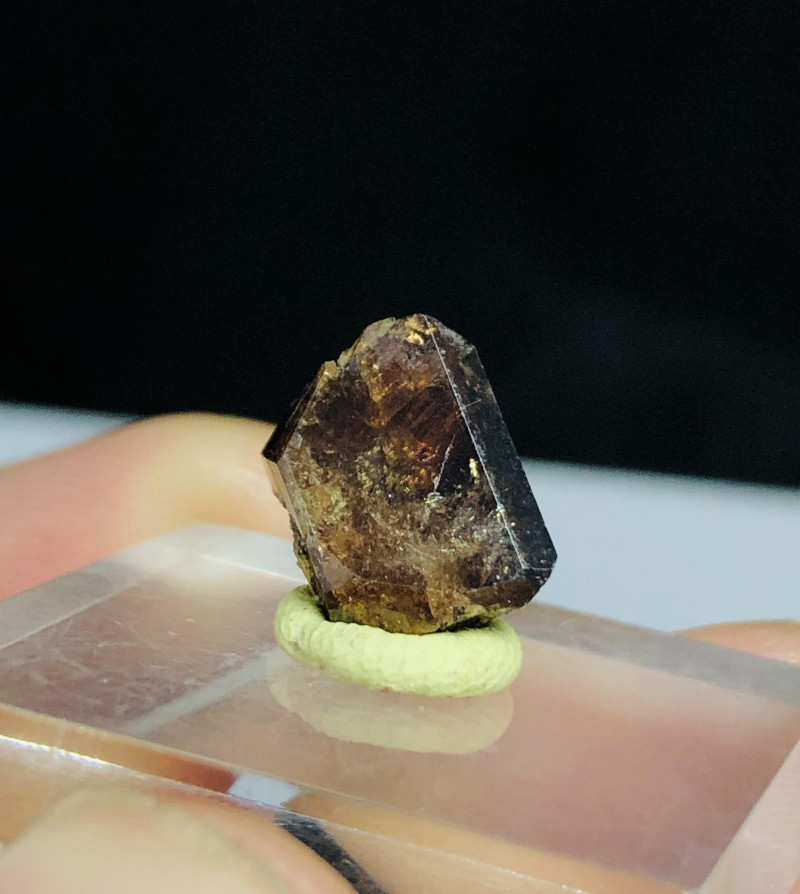
Sphene Formation & Nneɛma a Wɔde Yɛ Adwuma
Sphene raw crystals dodow no ara yɛ nketewa, nanso saa ahwehwɛ nketenkete yi kyekyɛ wɔ igneous ne metamorphic abotan ahorow so. Sphene ba sɛ aboɔden abo a ɛka ho, na ɛnyɛ ɔbotan no ɔha biara mu nkyem 1.
Wɔ abotan a ɛsakra mu no, sphene nyin wɔ schists, skarns, ne gneisses abura mu. Abotan bi a ɛyɛ ogya a sphene wom ne granite, pegmatites, diorites, ne syenites.
Bere a ogya abotan a ɛyɛ nwini nkakrankakra na ɛyɛ den fi magma mu no, nsu a ɛde nneɛma afoforo kɔ kotoku mu wɔ magma no mu. Nsu no yɛ nwini na nneɛma a aka no yɛ ahwehwɛ ma ɛbɛyɛ sphene.
Saa abotan a ɛyɛ ogya no betumi asakra esiane nhyɛso ne ɔhyew, ne nsu a aboɔden abo pii wom a ɛsakra ɔbotan no mu nneɛma nti. Tebea horow no nso betumi asesa ahwehwɛ bi a ɛwɔ ɔbo no mu ma ayɛ no sphene.
Mmeae a Wɔtu Tuo
Nneɛma titiriw a wonya fi sphene ne Amerika Atifi fam ne Madagascar Wonim mpɔtam pii sɛ ɛwɔ sphene pɔtee. Wɔ aseɛ ha yi, yɛbɛbobɔ sphene mmeaeɛ nyinaa ne sphenes a wonim wɔn (sɛ ɛfata a):
Afghanistan (ebinom kɔla sesa) .
Brazil (ɛtaa yɛ nea ɛda adi pefee; ɛyɛ abien; kɔkɔɔ kosi ahabammono; enni birefringence; Capelinha sphene)
Canada (a tuntum ne bruu) .
China
India (ahabammono, kɔkɔɔ, ne bruu; wiase no mu akɛse & ɛhyerɛn sen biara no bi)
Italy
Madagascar (kɔla kɔkɔɔ kosi ahabammono; ɛyɛ abien; ɛyɛ mmerɛw; ɛtɔ mmere bi a ɛyɛ kɛse; ɛyɛ birefringence a ɛwɔ fam)
Mexico (chrome, brown, yellowish-brown; ɛkɔ soro kodu nsateakwaa anan; birefringence a ɛkorɔn)
Myanmar (ɛtɔ mmere bi a ɛyɛ kɛse) .
Pakistan (ebinom kɔla sesa) .
Russia
Sri Lanka (ɛwo kɔkɔɔ, bruu tuntum, ne kɔkɔɔ-ahabammono; birefringence a ɛkorɔn sen biara) .
Switzerland
U.S.A. (Alaska; Maine; New York; California - aduru a wɔde yɛ nneɛma) .
Sɛ yɛde fibea ahorow to nkyɛn a, ɛka yɛ ade kɛse a ɛma wɔtɔ nneɛma. Sphene a wɔtɔn no bo bɛn na ɛsɛ sɛ wohwɛ kwan?
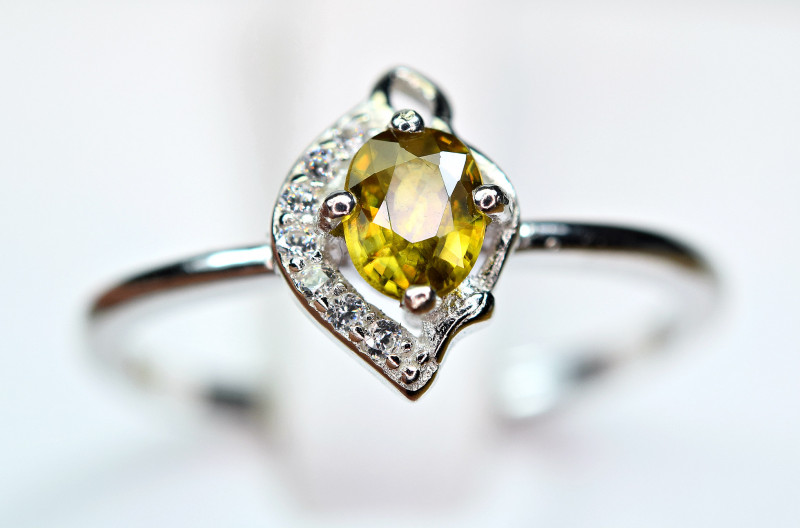
Sphene Aboɔden Aboɔ Boɔ & Ne Boɔ
Sphene bo yɛ nea ɛfata yiye, na ɛte sɛ tourmaline aboɔden abo. Nea ne bo yɛ den sen biara ne faceted sphenes a ɛpete yiye, kɔla a emu yɛ den, na emu da hɔ yiye.
Wɔ aguadidan bo mu no, bɛyɛ ɔha biara mu nkyem 50 a ɛyɛ faceted sphene aboɔden abo yɛ $100-$1,000, na ɔha biara mu nkyem 20 di akyi yɛ $50-$100 na ɔha biara mu nkyem 15 yɛ $20-$50. Ɛkame ayɛ sɛ saa aboɔden abo a wɔtɔn wɔ sotɔɔ mu yi mu ɔha biara mu nkyem 75 yɛ carat 1-5.
Wholesale bo bɛba fam, na yɛbɛkyekyɛ saa nneɛma no mu wɔ ase hɔ.
Sɛ yɛka ne nyinaa bom a, faceted chrome sphene a ɛpete yiye no ne nea ne bo yɛ den sen biara, efi $50-$600 wɔ carat biara mu ma abo a emu duru yɛ carat 1 kosi 10 ne $200-$1,000 wɔ carat biara ho ma abo a ɛsõ sen carat 20 wɔ wholesale mu. Chrome sphenes a ɛsakra kɔla a ɛwɔ afã horow no bɛyɛ $190-$475 wɔ carat biara mu.
Sphene bo a wɔbɔ wɔ carat biara ho ma kɔla ahorow a aka a ɛwɔ aboɔden abo a ɛwɔ afã horow no ne:
Kɔla-Sesa : $190-$475 wɔ carat biara mu
Yellow : $70-$320 wɔ carat biara mu (nanso ebinom du $650 wɔ carat biara mu)
Yellow-Green : $30-$70 wɔ carat biara mu
Green (ɛnyɛ chrome) : $30-$250 wɔ carat biara mu
Orange : $50-$75 wɔ carat biara mu ma carat 1-10
Afei, sphene cabochons bo a wɔbɔ :
Kɔla-Sesa : $80-$120 wɔ carat biara mu
Kɔkɔɔ : $1-$40 wɔ carat biara mu
Green : $5-$60 wɔ carat biara mu
Brown : $0.30-$9 wɔ carat biara mu
Nea etwa to no, yɛwɔ rough sphene , a ne bo yɛ $0.15-$5 wɔ carat biara mu, ɛwom sɛ nhwɛsode ahorow bi a wɔntaa nhu no du $20 wɔ carat biara mu de.
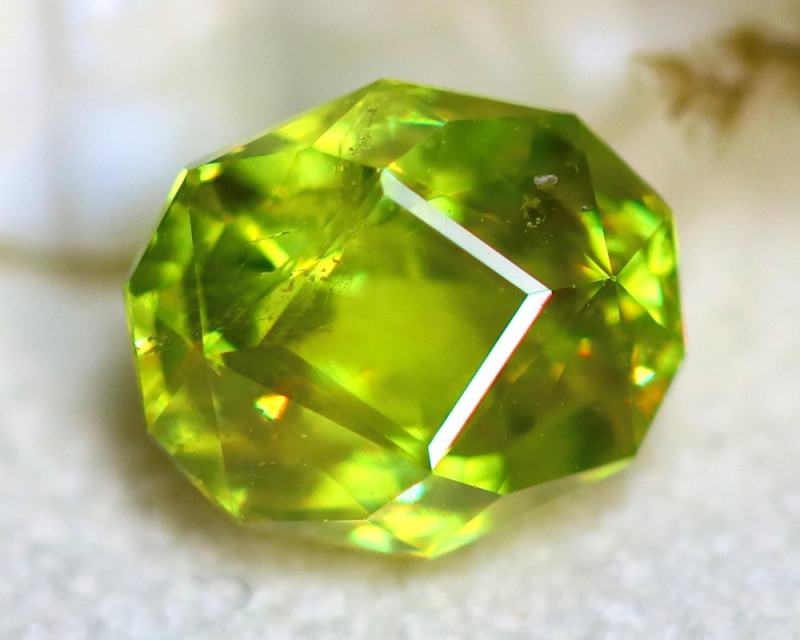
Sphene Hwɛ ne Nsiesiei
Ansa na yɛbɛka aboɔden abo hwɛ a wɔde hwɛ sphene dwoodwoo ho asɛm no, momma yɛnkɔ radiation afã no so na ama woakɔ so ayɛ dwoodwoo.
Asinasin biara a wɔayɛ no fɛfɛɛfɛ anaasɛ wɔayɛ no fɛfɛɛfɛ no yɛ nea asiane biara nni ho sɛ wobedi ho dwuma. Esiane sɛ sphene yɛ radioactive kakraa bi pɛ nti, asiane biara nni ho sɛ wobetumi adi nhwɛsode ahorow a wɔannoa no ho dwuma bere tiaa bi.
Esiane sɛ ɔbo no nyɛ den na ɛnyɛ den koraa nti, wɔmfa agude a ɛyɛ mmerɛw te sɛ sphene mpɛtea paw.
Wobetumi de nneɛma a ɛbɔ ho ban na wɔahyɛ no bere ne bere mu nkutoo ama agude afoforo te sɛ sphene kɔnmuade anaa asomuade ayɛ nea ahobammɔ wom na ansɛe. Nea ɛka ho no, asomuade ne pendants yɛ kɛse ma hann a ɛkyere na ɛkyerɛ saa hyerɛn a ɛhyerɛn no!
Sphene nkutoo na fa brɔs a ɛyɛ mmerɛw a wɔde ahyɛ nsu a ɛyɛ hyew ne samina a ɛnyɛ den mu. Mfa ultrasonic anaa steam cleaners nni dwuma.
Ma sphene nkɔ akyirikyiri fi:
Ɔhyew
Acid ahorow a wɔde yɛ nneɛma
Fifiri a ɛboro so
Nkɛntɛnso a emu yɛ den
Aboɔden abo afoforo (kora so wɔ ɔkwan soronko so) .

Wopɛ Aboɔden abo a Ɛte Sɛ Biara Nni Hɔ Woayɛ “Sphene” Kan?
Sɛ́ ebia wobɛfrɛ no titanite anaa sphene no, ade biako yɛ nokware: saa aboɔden abo yi yɛ aboɔden abo a ɛyɛ nwonwa a ɛyɛ nea wɔde kyerɛ wɔ nneɛma a wɔaboaboa ano biara mu — anaasɛ ɛboa atade fɛfɛ bi!
Efi asase, bohemia bruu pendants so kosi wiase yi akyi, asomuade a ɛyɛ ahabammono a ɛyɛ hyew ne nea ɛkeka ho so no, akyinnye biara nni ho sɛ wubewia beae no wɔ sphene biara mu!
搜尋Gemstone Encyclopedia
相關拍賣
最新的文章
Chrysanthemum nhwiren abo yɛ abɔde mu anwonwade a ɛwɔ calcite, celestite, anaa andalusite nhwiren fitaa bi a wɔde asisi limestone tuntum anaa atɛkyɛ abo so.
13th Jan 2026
Rainbow lattice sunstone yɛ feldspar ahorow a ɛwɔ optical nsunsuanso abiɛsa fɛfɛ a efi nneɛma ahorow a wɔde ka ho a ɛwɔ hɔ no mu ba. Ɛyɛ ogya kɔla display ne lattice nsusuwso ma ɛyɛ coletor abohene a wɔntaa nhu!
12th Jan 2026
Thulite yɛ Norwayfo aboɔden abo a wɔntaa nhu a ɛda rosy hue a ɛyɛ hyew a efi zoisite mineral abusua a wɔtaa de di dwuma wɔ agude tebea ne pendants mu adi.
6th Jan 2026
文章類別
How To's is where you will find helpful articles from gem Rock Auctions on how to cut gemstones, select gemstones and buy gemstones.
9文章





